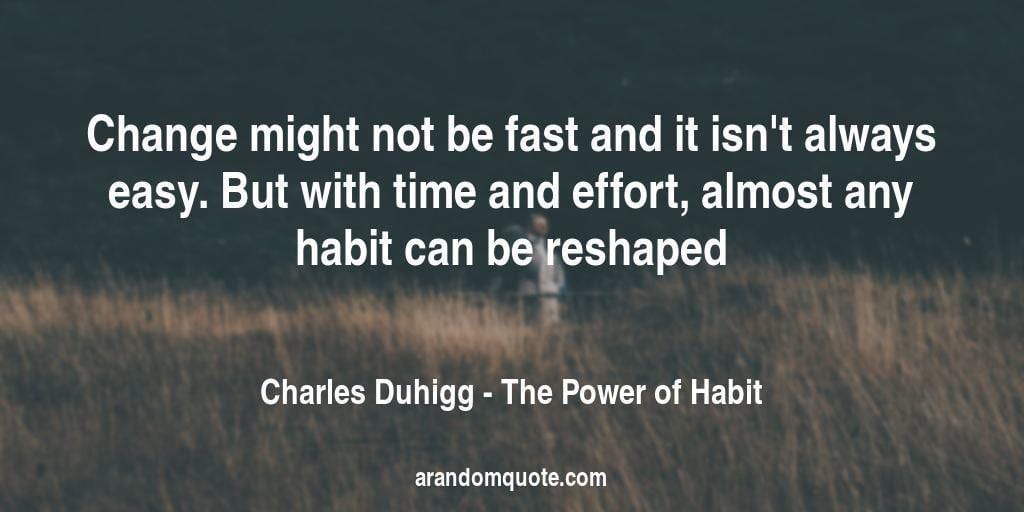The Power Of Habit Summary By Charles Duhigg
The Power Of Habit Summary
The Power Of Habit Short Summary:
Author Charles Duhigg says in The Power Of Habit that 40 percent of everything which we do is based on our habits which we have formed since our childhood. The author further says that because we do not understand the brain hence we don’t understand how habits get formed and how to break them.
Usually we have a misconception that bad habits can’t be broken, but as per author Bad habits can be broken, author states that several habits can be broken at the same time, this book will help you to understand why habits are at the core of everything you do, how you can change them and what impact that will have in your life, your business and your society.
About Author Charles Duhigg:
Before talking about the Book The Power of habit, let’s first discuss the Author Charles Duhigg. Charles is an Author of the power of habit book, about the science of habit formation in human lives, companies and societies and smarter faster better about the science productivity, Charles worked as a Reporter for the New York Times for a decade also won Pulitzer Prize for Explanatory Reporting in 2013.
Quote from The Power Of Habit:

Three important things which you can learn from this book is That Habit works in 3-step loops: Cue, Routine and Reward.
Any person can change their habit just by substituting one part of the loop, the routine.
Willpower is the most important habit, you need to form or reshaped your habit.
Now let’s understand the book the power of habit in more detail
Chapter 1: The Habit LOOP (How Habit Works)
The author says that there’s a process in which brain converts a sequence of actions into an automatic routine is known as Chunking, and it’s the root of how habit forms, the author says that there are hundreds if not dozens of behavioral chunks that we rely on every day, for example, after waking up in the morning there are certain routine which you follow always without even thinking of it such as getting up then brushing teeth, automatically putting toothpaste on your toothbrush before sticking it in your mouth,
some habits are difficult, some actions become your habit only after putting efforts into learning it, for example, driving a car, when you were learning car at first it required a lot of focused and concentration, but later with regular practice, it became your habit, but later ones you become pro into it, ones it becomes your habit, you easily drive a car onto the street with hardly any street. The Routine occurs by habit.
scientists say that habits emerge because the brain is constantly looking for ways to save the efforts, left to its own devices, the brain will try to make almost any routine into a habit.
The author says that Habit works on Cue, Routine, and Reward, Cue Is what Triggers you to do the habit.
The Routine is the behavior you then automatically engage in, and lastly, you will receive the reward for completing the routine.
Chapter 2: The Craving Brain ( How to Create New Habits)
In this chapter, the author has shared a success story of Hopkins, one day in the earlier 1900’s, The Prominent American Executive named Claude C.Hopkins was approached by an old friend with a new business idea, his friend approached Hopkin with an amazing product which he was convinced that it will for sure going to hit, and that product was(toothpaste) Pepsodent, Hopkins at the time was at the top of booming industry, Hopkin was at the peak of his career, however at first he wasn’t convinced with his friend product, and also said No at first, but after looking his friend consistency of approaching him again and again, He said yes with an agreement of giving six month’s option on a blocked stock, this turns out to be the best and the wisest financial decision of Hopkin’s life, Hopkins turned Pepsodent as one of the best product on the earth within 5 years of that partnership.
Hopkin is best known for how to create new habits among customers, he says that the secret of his success was that he had found certain cue and reward that fueled a particular habit, how Hopkins created new habits among customers, He created Cravings And that craving, it turns out, is what makes cues and rewards work. That craving is what powers the habit loop.
Throughout his career, one of Claude Hopkins’s signature tactics was to find simple triggers to convince consumers to use his product every day. He sold Quaker Oats, for instance, as a breakfast cereal that could provide energy for twenty- four hours— but only if you ate a bowl every morning.
Chapter 3: The Golden Rule of Habit Change (Why Transformation Occurs)
The trick to changing a habit then is to switch the routine and leave everything else intact.
The author also shares how you can improve your willpower, however, willpower is the most important thing which we need for forming or replacing the habit.
Three things can be done to improve willpower
1)do something that requires a lot of self-discipline
2) plan ahead for worst-case-scenarios
3)preserve an autonomy( an autonomy is a major part of living the passionate life)
This is the end of The Power Of Habit Summary. Hope you like it.
Thank you








Still i don’t read any book please preferred me first any book thn i will start them